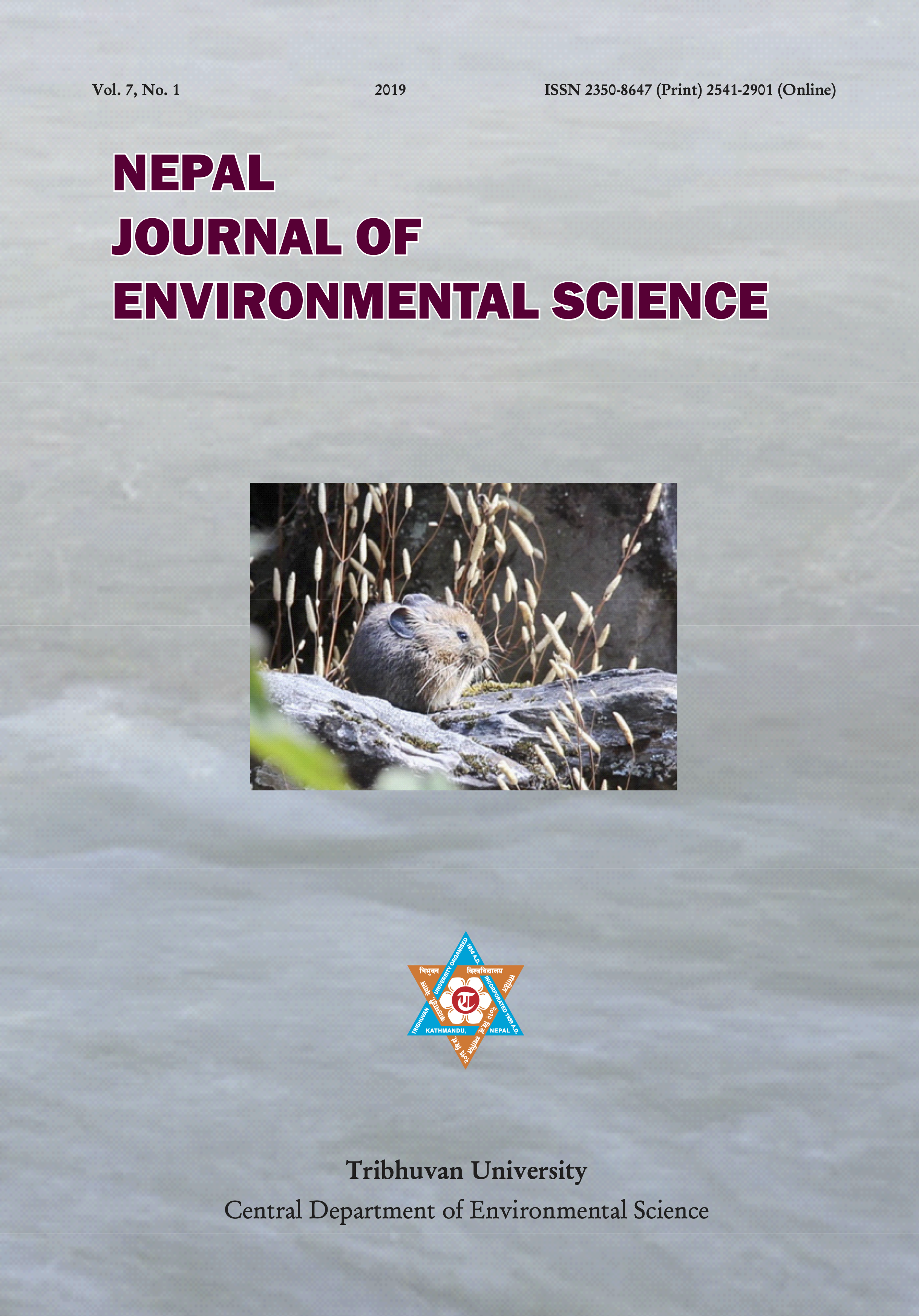Water quality and land use/cover changes in the Phewa Watershed, Gandaki Province, Nepal
DOI:
https://doi.org/10.3126/njes.v7i0.34473Keywords:
Drinking water quality, Irrigational quality indices, Land use pattern, Phewa LakeAbstract
Knowledge and understanding of land use and water quality nexus is an important precursor for assessing the human-water interactions and sustainable freshwater management. In this study, the land use/cover change (LUCC) and water quality assessment with respect to drinking and irrigational purposes were carried out in Phewa Lake, Nepal. A total of 20 water samples were collected during the winter and summer seasons in 2017 and were analysed for major hydrochemical variables. The water quality index of Phewa Lake was found to be 5.15 and 2.57 during the winter and summer, respectively, indicating the suitability of water for drinking purposes. The results revealed that the electrical conductivity, sodium percentage, and sodium adsorption ratio were found to be 38.80 µS/cm, 16.99, and 0.10, respectively in the summer and 85.06 µS/cm, 14.68, and 0.15, respectively in the winter. Similarly, permeability index, Kelly’s ratio, magnesium hazard, cation ratio of soil structural stability, and Wilcox diagram exhibited that the water was suitable for irrigation in both seasons with relatively better quality in the summer. The dynamic pattern of LUCC in the Phewa watershed exhibited an increase in the spatial extent of forest, shrub-land, grassland, and built-up area, whereas decreasing trend of agricultural land, barren land, and water bodies. Irrespective of the seasonality, the LUCC-water quality nexus showed elevated concentrations in the proximity of the urban settlements. The present study could be helpful for the restoration of water quality by sustainable land-use practices in the Himalayan region.
Downloads
Downloads
Published
How to Cite
Issue
Section
License
This license enables reusers to distribute, remix, adapt, and build upon the material in any medium or format for noncommercial purposes only, and only so long as attribution is given to the creator.

